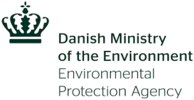
Biocides and pesticides are widely used to control pest organisms to protect human assets, e.g. agricultural production, food stores and infrastructures. The extensive use of chemical control results in development of resistance in pest organisms. Resistant pests requires development of more toxic poisons that also will have stronger effects on non-target species and ecosystems.
Anticoagulant rodenticides are the most commonly used group of poisons to control rodents and resistant rodent populations has been observed worldwide.
Despite regulatory restrictions and guidelines aimed at preventing exposure of non-target species and reduce secondary poisoning of predators with anticoagulant rodenticides, the exposure rate of predators and raptors is very high in many countries. The anticoagulant rodenticides have the same toxic effect in non-target mammals and birds as in the targeted rodents.
Agent-based modelling of highly detailed dynamic environments can be an efficient tool for detailed risk assessment of chemicals on target species and non-target species and development of resistance to chemicals at landscape scale. This project will elucidate on landscape and management effects on development and maintenance of rodenticide resistance in rodent populations.
We use ALMaSS vole model incorporating individual genetics and genetic control of rodenticide resistance and potential deleterious effects on litter size and fitness as observed in resistant rats. We assume a natural frequency of the resistance gene and neutral genetics as a baseline scenario against which we compare different scenarios of treatment with rodenticides in combination and habitat management.
This simulation approach may provide a new quantitative way to evaluate pest management, non-target species exposure risk and could be extended to cover other species such as rats in urban environments.
2011-2014
Danish Environmental Protection Agency
